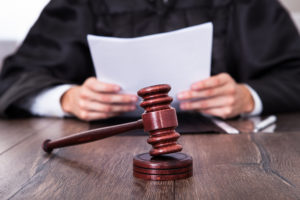Understanding Key Parts of Your Case: What is a Motion for Summary Judgment?

After you have been seriously injured in a motor vehicle accident you may be confused and frustrated what to do next. Especially if it was not your fault, such as a driver running a red light or a truck driver falling asleep. New York law allows for victims to recover compensation for their pain and suffering, medical bills, lost wages, future lost earnings, and other damages. But one component of almost every motor vehicle accident case is when a defendant tries to get the case dismissed. This can be frustrating and even aggravating for a victim to know that a defendant is trying to hide behind their wrongful conduct to get away with it. One why they do this is with a motion for summary judgment. Our New York City personal injury lawyer explains what is a motion for summary judgment and how can it affect your rights.
Components of a Personal Injury Case in New York City and Queens Car Accident Cases
To understand what is a motion for summary judgment, one must first understand the components of a lawsuit. A case is initiated with a pleading known as a “summons and complaint.” The “summons” is the document calling a person or business to court to answer the complaint. A “complaint” is the charging document, or the document that sets forth the facts, damages, and causes of action.
Once a defendant is served a summons and complaint, he or she must serve an “answer.” An answer is the defendant’s responses to the allegations in the complaint and affirmative defenses, or legal excuses for the allegations in the complaint. A defendant may also serve counterclaims which are allegations against the plaintiff. If there are counterclaims, a plaintiff may serve a “reply” which is the response to the counterclaims.
After pleadings, a case continues with what is called “disclosure” or also known as “discovery.” This is the exchange of paper information like medical records and accident reports between the parties. Once paper information is exchanged, there is something called a “deposition” or “examination before trial” (EBT). This is when the lawyers get to ask questions on the record of witnesses (like the parties) who are under oath.
After depositions, the next step is typically supplemental paper disclosure and then filing a note of issue. This tells the assigned judge that the case is ready for trial and requests a conference with the court. But the note of issue also does something important—it sets the time limit to file a motion for summary judgment.
What is a Motion for Summary Judgment?
A motion for summary judgment is known as a type of “accelerated judgment.” That is, rather than proceeding to trial to get a judgment from a jury, a motion for summary judgment is a motion or request for an order that the judge issues a judgment without a jury. This is a huge request which has constitutional ramifications in that a victim cannot have his or her day in court if a judge grants summary judgment.
In order for a defendant to obtain summary judgment, he or she must establish that there are no questions of fact or credibility for a trier of fact (a jury or a judge in a bench trial) to resolve after hearing the testimony and weighing the evidence. In addition, the defendant must established that, as a matter of law, he or she is not liable on these material facts.
Thus, the two part showing is essentially that the facts are as they are and the facts are not contested with different stories or different opinions as to what happened. And the second part is that the law says, based on those uncontroverted facts, that the defendant should win.
Common Motions for Summary Judgment in Queens Car Accident Cases
Our New York City personal injury lawyers know that a summary judgment motion is a common occurrence in all personal injury cases, especially Queens car accident cases. The most common types of motions include the following:
- Whether the defendant was at fault (i.e., legal excuse)
- Whether the plaintiff suffered a “serious injury” under the insurance law
- Whether the defendant’s conduct was excused as a matter of law (i.e, emergency doctrine)
- Whether the plaintiff was the sole cause, i.e., the defendant did not cause the accident even by 1%
- Whether another third-party was the sole cause (i.e., the defendant stopped short behind the plaintiff and then a third vehicle rear-ended the defendant who rear-ended the plaintiff)
- Whether the plaintiff suffered pre-existing damages and the damages caused by the subject accident were not causally related to the crash, and
- Other common grounds.
Summary Judgment Motions Require Our Help
Here at Cohen and Cohen Law Group, P.C., our experienced New York City personal injury lawyers know how devastating any type of motor vehicle accident could be. We work hard with victims and their families on their cases. Summary judgment motions can be very difficult and sometimes present serious obstacles for victims. Some law firms may even fall victim to traps in summary judgment motions due to a lack of experience handling them. But at our law firm, we know how to handle summary judgment motions to raise questions and fact or credibility. We also know how to use use summary judgment motions as a sword to win cases for our clients without trials. Learn more about your rights by calling 800-247-8164 for a FREE case evaluation or use our convenient and easy-to-use contact us box available here.

